
|

|
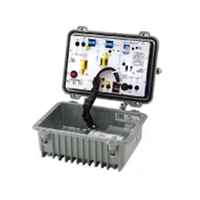
|

|

|
|
|
|
|
|
|
|
|
|
The GainMaker® Broadband Amplifier Platform includes a variety of RF amplifiers that address the divergent needs of today’s broadband networks. All GainMaker amplifiers provide superior 2-way performance and reliability combined with a user-friendly layout. All share common plug-in accessories and perform to 1 GHz in the forward path. The System Amplifiers in this family provide multiple forward RF output ports while the Line Extenders provide a single forward RF output port.
|
The GainMaker® Broadband Amplifier Platform includes a variety of RF amplifiers that address the divergent needs of today’s broadband networks. All GainMaker amplifiers provide superior 2-way performance and reliability combined with a user-friendly layout. All share common plug-in accessories and perform to 1 GHz in the forward path. The Line Extenders in this family provide a single forward RF output port while the System Amplifiers provide multiple forward RF output ports.
The GainMaker Line Extender modules have increased gain and are mechanically compatible with previous Line Extender II and III housing bases, often enabling upgrade to higher bandwidth with no re-spacing or re-splicing. The DC power supply is modular and located in an updated housing lid for easy access. All GainMaker Line Extender modules are factory configured with reverse amplifier, diplex filters, forward interstage pads and interstage equalizer, to ensure optimal performance. For output level control over temperature, optional configurations additionally include either single-pilot Automatic Gain Control (AGC) or a Thermal compensation circuit.
The GainMaker Line Extender has a single forward RF output port and is ideally suited for providing high (bridger) level RF in the feeder network.
|
The GainMaker® Broadband Amplifier Platform includes a variety of RF amplifiers that address the divergent needs of today’s broadband networks. All GainMaker amplifiers provide superior 2-way performance and reliability combined with a user-friendly layout. All share common plug-in accessories and now perform to 1 GHz in the forward path. The System Amplifiers in this family provide multiple forward RF output ports while the Line Extenders provide a single forward RF output port.
GainMaker System Amplifiers utilize GaAsFET technology in the interstage and output gain stages for improved distortion performance.
The GainMaker System Amplifier modules have increased gain and are mechanically compatible with previous System Amplifier II, II+, and III housing bases, often enabling upgrade to higher bandwidth with no re -spacing or re-splicing. The DC power supply is modular and located in an updated housing lid for easy access. All GainMaker System Amplifier modules are factory configured with reverse amplifier, diplex filters, thermal compensation circuit, forward interstage pads, and equalizer to ensure optimal performance. Optional single-pilot Automatic Gain Control (AGC) configurations are also available.
The GainMaker High Gain Dual (HGD) System Amplifier is ideally suited for providing high (bridger) level RF to the feeder network. It provides two forward RF outputs (Main and Auxiliary), with the option to create a third RF output via use of an optional plug-in Auxiliary path signal director.
|

|
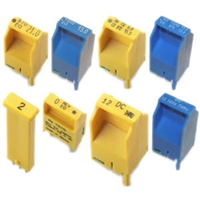
|

|
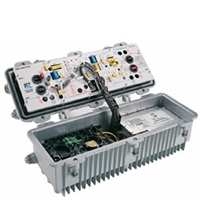
|

|
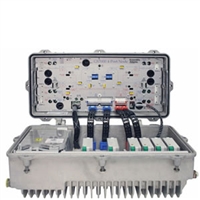
|
|
|
|
|
|
|
|
|
|
The GainMaker amplifier accessories are plug-in devices common to all GainMaker System Amplifiers and Line Extenders. They are typically field installed in accordance with system design.
|
The GainMaker® Node is designed to serve as the cornerstone of today’s emerging fiber deeper network architectures. The GainMaker Node combines the superior proven technologies of both the GainMaker RF Amplifier and Prisma® Optical components. Available with two or three high level RF output ports, it is the ideal platform for delivering video (digital and analog) as well as high-speed data services over advanced hybrid fiber/coax (HFC) networks. With its modular design of fiber receiver, reverse fiber transmitter and RF amplifier electronics, the GainMaker Node station can provide the full complement of functions required by advanced networks.
The GainMaker Node accommodates a second forward receiver with an RF switch to accommodate forward path optical redundancy. Reverse traffic can be combined and routed to FP, DFB, or CWDM reverse transmitters. The High Gain Dual launch amplifier module provides two high-level outputs (with the ability to split one internally to feed a third port). Additionally, the GainMaker Node is available with an optional custom status monitoring transponder for use with Scientific-Atlanta’s ROSA / TNCS status monitoring and control element manager. On-board temperature, automatic gain control (AGC) levels, RF switch position, power supply condition, as well as other features/parameters can be monitored through this transponder.
Installation of the GainMaker Node is quick and easy. The GainMaker Node can be ordered as a complete node or as an upgrade kit for existing GainMaker System amplifiers. The fiber receiver is delivered with preconnectorized fiber terminations. The optional preconnectorized cable stub is the ideal method for connecting the GainMaker Node to the fiber network (see cable stubs data sheet). External termination connectors are also available for central strength member and LXE style fiber optic cables. The GainMaker Node includes a 4-fiber handling tray for these cables.
System reliability and upgrade flexibility are integral to the construction of the GainMaker Node. Key features include a chromate plated housing to withstand harsher operating environments, local status monitoring of each module, and a 1 GHz housing for future higher bandwidth applications.
|
The Model GS7000 4-Port Node is Scientific-Atlanta’s latest generation 1.2 GHz optical node platform and utilizes a completely new housing designed for optimal heat dissipation. This platform allows independent segmentation and redundancy for both the forward and reverse paths in a reliable, cost-effective package.
The forward path of the Model GS7000 Node can be deployed with a single broadcast 1310/1550 nm optical receiver distributing common services to either four output ports (all high level) or six output ports (two high level and four lower level). The forward path can also be segmented by using two independent optical receivers that each feed half of the node’s output ports (left/right segmentation). Forward path optical redundancy is supported via the use of optional redundant optical receivers. The type of forward path segmentation and/or redundancy is determined by the type of Forward Configuration Module installed in the node.
The Model GS7000 Node’s reverse path is equally flexible. Reverse traffic can be segmented or combined and routed to a maximum of 4 FP, DFB, or CWDM reverse optical transmitters, or to advanced Baseband Digital Reverse optical transmitters as part of Scientific-Atlanta’s bdr™ system. Reverse path optical redundancy is supported via the use of optional redundant optical transmitters. The type of reverse path segmentation and/or redundancy is determined by the type of Reverse Configuration Module installed in the node. A Reverse Input Port is also provided for high frequency (5 - 210 MHz) reverse signal injection.
All optical transmitters and optical receivers used in the GS7000 have new high profile module covers that include both a self-contained fiber pigtail storage area and an integrated pull ring for easier module installation and removal. Additionally, the GS7000 optical receiver is a new low-current design that dissipates less power and incorporates a two state interstage RF attenuator switch for performance optimization.
|

|
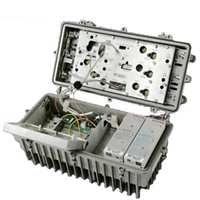
|

|

|

|
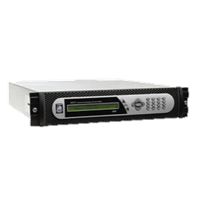
|
|
|
|
|
|
|
|
|
The Model 6940 Collector/Terminator Node is a three port unbalanced node of the Prisma Model 6940 Node family, specially designed for the collector / terminator architecture.
In the forward path, the high gain optical receiver in both the collector node and the terminator node accepts 1310 and 1550 nm wavelength optical inputs and provides forward RF output to the launch amplifier module. The launch amplifier has three unbalanced forward RF outputs, one of which has a 5 dB higher level than the other two.
In the reverse path, the launch amplifier in both the collector node and the terminator node has three reverse RF inputs fed from the HFC plant. The three RF inputs to the terminator node are combined and amplified in the launch amplifier and routed to an RF output port. The RF output is routed to the collector node through an operator-installed, hard-line coaxial cable. The collector node combines this RF signal with its three reverse input signals. The combined reverse signals from both the terminator and collector node are amplified and routed to the collector node’s reverse transmitter for optical transmission to the headend or hubsite.
The Model 6940 Collector/Terminator Node utilizes a standard Model 6940 Node housing. The housing incorporates many features that enhance ease of use and reliability, such as a separate AC powering port, optional redundant power supply, and extended ports to allow for easy heat shrink weather protection.
The Model 6940 Collector/Terminator Node can also be configured with a Scientific-Atlanta status monitoring transponder. The transponder, in conjunction with Transmission Network Control System (TNCS), or other compatible element management system, enables remote monitoring of critical node related parameters, and remote control of each optional reverse path switch for ingress troubleshooting.
|
To help optimize bandwidth utilization in digital transmission systems, the Model D9034-S Encoder is designed to deliver high-quality MPEG-4 part 10 (also known as H.264 or AVC) and optionally MPEG-2 video using very limited bandwidth.
In this encoder, MPEG-2 can optionally co-exist with MPEG-4 video within the same chassis. This enables operators to make use of the MPEG-4 and the MPEG-2 encoding format. The D9034-S Encoder offers PreSightPlus as an option, which is an adaptive and motion compensated noise reduction technique that provides picture quality in a noisy environment, and is suitable in both contribution and distribution applications. For user-friendly TV guides and similar applications, the D9034 Encoder offers an integrated picture-in-picture (PIP) encoding feature as an option.
|
The MPEG-4* part 10 (H.264/AVC) Encoder Model D9054 is the right choice for any operator who wants to compress high-definition video using MPEG-4 compression technology. PreSightPlusTM pre-analysis, dual-pass technology and single-slice architecture efficiently utilizes the scarce bandwidth resources in distribution systems and provides excellent picture quality. Supporting both 1080i and 720p, the encoder offers AVC encoding in various distribution and contribution applications. Based on a dedicated encoder resource, the D9054 Encoder optionally supports picture-in-picture (PIP) functionality for convenient channel change and mosaic applications. The HDTV Encoder will support multiple audio formats, providing excellent flexibility. It will support up to two stereo pairs of either MPEG-1 Layer II audio, Dolby® Digital (AC-3) 2.0 audio, AAC audio, or AACv1 audio with a broad range of bit rates, and will support pass-through of externally encoded Dolby 5.1 audio.
|

|

|

|

|

|

|
|
|
|
|
|
|
|
|
|
The Cisco D9824 Advanced Multi Decryption Receiver (Figure 1) includes a built-in decoder that can decode an MPEG-2 or MPEG-4 Advanced Video Coding (AVC) high definition (HD) program for analog monitoring or a standard definition (SD) down-conversion for composite. Decoding of an MPEG-2 or MPEG-4 AVC SD program is also available for analog. By supporting decryption of up to 32 Cisco PowerVu encrypted programs, this single receiver allows you to efficiently receive and distribute multiple programs.
|
The Cisco® D9854-I Advanced Program Receiver (Figure 1) is designed for satellite and terrestrial content distribution applications requiring Digital Video Broadcasting - Satellite (DVB-S), Digital Video Broadcasting - Satellite - Second Generation (DVB-S2) and IP reception capabilities with advanced digital outputs for digital tier program distribution. A built-in decoder can decode an MPEG-2 or MPEG-4 Advanced Video Coding (AVC) high definition (HD) program for analog monitoring, or a standard definition (SD) down-conversion for composite. MPEG-2 or MPEG-4 AVCSD programs can also be decoded for analog and SDI output. D9854-I comes with RF, ASI and MPEGoIP input combined with a high-quality SDI or HD-SDI output and optional MPEGoIP output.
|
The PowerVu® Model D9858 Advanced Receiver Transcoder provides the ability to deliver MPEG-4 HD services to MPEG-2 CATV headends. The Model D9858 receiver extends the distribution options for MPEG-4 AVC HD from solely MPEG-4 environments to existing MPEG-2 networks. Support for simultaneous dual-channel decryption and transcoding provides the advantage of density for locations requiring more then just a single channel. The D9858 can be utilized to provide a down-converted Standard Definition MPEG-2 program instead of one or both of the available HD transcoded programs. Video and two audio outputs are available for analog down-conversion for one of the decrypted incoming MPEG-4 HD programs.
|

|

|

|

|

|
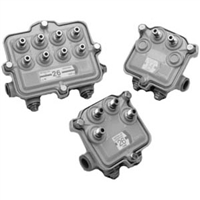
|
|
|
|
|
|
|
|
|
|
The Cisco D9859 platform extends the distribution options for MPEG-4 Advanced Video Coding (AVC) HD from MPEG-4 only environments to existing MPEG-2 networks. Support for up to eight simultaneous high-definition or standard-definition (SD) channels of decryption and transcoding provides the advantage of density for locations requiring more than just a single channel. The Cisco D9859 can provide up to 8 down-converted MPEG-2 standard definition programs or MPEG-2 high-definition transcoded programs along with decrypted passthrough of the incoming programs. Video and two audio outputs are available for analog down-conversion for one of the decrypted incoming MPEG-4 high-definition programs. The base Cisco D9859 comes configured for 1 HD and 1 SD output with dynamic licensing options to upgrade the unit in the field locally or over the air using the Cisco PowerVu Network Center system, supporting a pay-as-you-grow model.
|
The Cisco D9865 Satellite Receiver is designed for satellite content distribution, and targets the broadcast, business TV, private networks and SMATV environment. The receiver offers the capability to receive digitally encrypted video, audio, VBI and data. It provides a cost-effective, variable-rate solution to transition existing DVB-S/MPEG-2 services to DVB-S2/MPEG-4. Additional features include IP data and RS-232 utility data.
The unit is set up via the on-screen display menu, using a handheld infrared remote control, or navigation keys on the front panel of the receiver. User-editable presets are provided for quick re-tuning to other broadcasts. The receiver also supports a Web interface and SNMP control via the Ethernet port as an option.
This receiver is capable of receiving a DVB/MPEG compliant free-to-air broadcast.
Supporting the PowerVu conditional access with DES or DVB de-scrambling, or DVB Conditional Access Module (CAM) based DVB CA systems, this receiver can be used to receive secured corporate communication of video, audio and/or data broadcast. It can also be used for secured delivery of TV programming to hotels, MDUs, homes & commercial establishments such as restaurants, stores, etc. Data outputs can be used for distribution of documents, price lists, and video files, etc. Utility data (RS-232) can be used for smaller file transfer at a slower speed. DVB MPE IP data via an Ethernet interface allows for connection to a local area network for larger file transfer and/or communication with multiple network clients.
|
- Standard polymer coating for superior environmental protection
- Sealed extended F-ports on all taps for superior sealing against moisture ingress
- Tin-plated brass F-ports
- Component covers for additional protection of circuitry during maintenance
- Faceplate interchangeability for two- and four-way taps enabling subscriber expansion without costly resplicing
- Industry leading insertion loss specifications, reducing amplifier requirements
- Modular design allows changing of board and cover without removal of housing from cable
- Versatile housing design permits aerial or pedestal mounting
|

|
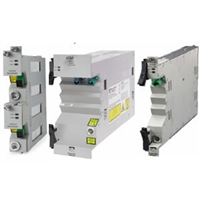
|

|
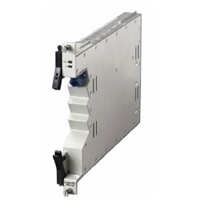
|

|
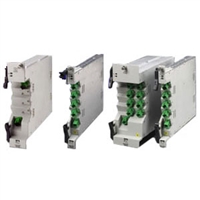
|
|
|
|
|
|
|
|
|
The Prisma II™ optical network is an advanced transmission system designed to optimize network architectures and
increase reliability, scalability, and cost-effectiveness. Prisma II 1 GHz 1550 nm Transmitters offer the ultimate in
network architecture flexibility with products designed specifically for broadcast or narrowcast transmission to long
distances and at various wavelengths.
|
The Prisma II™ optical network is an advanced transmission system designed to optimize network architectures and increase reliability, scalability, and cost effectiveness. The 1310 nm Transmitters are designed to operate over a wide
range of optical output powers and loss budgets, delivering both analog and digital signals. Microprocessor control allows ease of installation and flexibility of application. The transmitter design includes an array of contemporary capabilities
including: low RF input level, broadcast and new media RF inputs, and three levels (Standard, XL and XLS) of performance.
|
The Prisma II™ optical network is an advanced transmission system designed to optimize network architectures and increase reliability, scalability, and cost effectiveness. Prisma II 1550 nm Optical Amplifiers offer a wide range of
configurations and output powers for the ultimate in network architecture flexibility.
The Prisma II Optical Amplifiers are available as single modules with various output options or as configured amplifier systems with a pre-amplifier and a corresponding amplifier module. Additional post-amplifier modules can be
designed in for greater routing capabilities.
Gain Flattened EDFA
The Prisma II Gain Flattened Erbium Doped Fiber Amplifier (EDFA) is designed for use in multiple wavelength systems. This highly versatile EDFA maximizes system performance and flexibility by providing automatic gain control (AGC) while maintaining gain flatness for up to 40 wavelengths. The Prisma II Gain Flattened EDFA gives the user the flexibility to select between having constant composite output power or having constant gain per wavelength.
Single Optical Amplifier Modules
The Prisma II Optical Amplifiers offer a broad range of output powers in stand-alone modules. Operating over a wide range of input powers from a Prisma II 1550 nm Transmitter or another 1550 nm Optical Amplifier upstream, the amplifier modules provide reliable, high-performance transmission of voice, video, and datasignals for all optical networking needs.
Configurable Optical Amplifier System
The configurable system consists of one high-power 8 x +17 dBm pre-amplifier module and one post-amplifier module. The post-amplifier module is available with various number of output port and power output options. For flexibility in network expansion, add-on post-amplifier modules can be added to the configurable system.
Add-On Post-Amplifier Modules
Up to seven (7) additional post-amplifier modules can be used with the configurable system for outstanding network expansion capabilities. Post-amplifier modules require the high optical input provided by the pre-amplifier modules of the
configurable system.
|

|

|

|

|

|

|
|
|
|
|
|
|
|
|
|
The Prisma II™ optical network is an advanced transmission system designed to optimize network architectures and increase reliability, scalability, and cost- effectiveness. Prisma II 1550 nm Transmitters offer the ultimate in network
architecture flexibility with products designed specifically for broadcast or narrowcast transmission at long or extended distances.
|
The Prisma II™ optical network is an advanced transmission system designed to optimize network architecture and increase reliability, scalability, and cost effectiveness. The 1310 nm High Density Transmitters (HDTx) are designed for use in the standard Prisma II chassis* and utilize standard power supplies and fan tray. The ability to mix high-density transmitter modules with other PII modules in the same chassis greatly enhances the flexibility of the platform. Up to 26 transmitters can operate in a standard 6 RU Prisma II Chassis effectively doubling the density for 1310 nm transmitters in the chassis. The transmitter has 1 GHz passband which greatly increases the bandwidth for high definition TV and other advanced services. Microprocessor control allows ease of installation and flexibility of application. The transmitters are offered in a wide range of output powers, from 3 dBm to 15 dBm.
|
The 1.2 GHz GainMaker® Broadband Amplifier Platform includes a variety of RF amplifiers that address the divergent needs of today's broadband networks. All 1.2 GHz GainMaker Line Extenders provide superior two-way performance and reliability combined with a user-friendly layout.
|

|

|

|
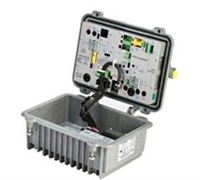
|

|

|
|
|
|
|
|
|
|
|
|
The Cisco® D9800 Network Transport Receiver (Figure 1) is the most versatile receiver designed offering hardware configurability and Over The Air (OTA) licensing that allows content providers to customize the product to support the gamut of their applications. Designed to support High-Efficiency Video Coding (HEVC) and Ultrahigh-Definition (UHD) delivery over satellite and IP terrestrial content distribution networks requiring Digital Video Broadcasting - Satellite (DVB-S), Digital Video Broadcasting - Satellite - Second Generation (DVB-S2), and IP reception capabilities, it future proofs the next network expansion. The D9800 chassis is available in a single stream variant for decoding to baseband digital or analog video and multi-stream variant for bulk decryption and high density transcoding applications. The single stream variant focuses on single service video decode applications. The integrated video decoder can decode an MPEG-2, Advanced Video Coding (AVC), or HEVC video-encoded service and output the Serial Digital Interface (SDI) or composite uncompressed video. The D9800 is capable of outputting simultaneous High-Definition (HD) and down-converted Standard Definition (SD). The multi-stream chassis is targeted towards applications that require decryption and/or transcoding on multiple video services within a transport stream or multiple transport streams. The optional satellite front end has four demodulators for sourcing content across transponders. The multi-stream chassis can decrypt up to 32 PowerVu services and transcode up to 16 services of AVC to MPEG-2 making it ideal for content providers carrying a high number of channels. The optional high density HEVC card adds the ability to transcode from an HEVC encoded source. For content providers exploring migration from satellite distribution to IP, the D9800 offers several options that enable content providers a path to a graceful migration. MPEGoIP is available for leased line fixed bandwidth applications as well as Adaptive Bit Rate (ABR) and Zixi for transmission over the Content Delivery Networks (CDN). For these use cases, the outputs of the receiver remain transparent so any output application can be served with these new input sources.
|
The Cisco® 1.2GHz GainMaker® GaN System Amplifier is the latest-generation broadband amplifier in the Cisco GainMaker platform. Gallium nitride (GaN) technology supports RF output levels up to 57 dBmV. The Cisco GaN amplifier (Figure 1) provides one high-level forward RF output. All Cisco GainMaker products share common plug-in accessories and perform to 1.2 GHz in the forward path. Cisco 1.2GHz GainMaker system amplifier modules have increased gain to allow drop-in for 750-MHz spacing and are mechanically compatible with previous Cisco GainMaker System Amplifier 1.0GHz GMLE housing bases, often allowing upgrade to higher bandwidth with no respacing or resplicing. The DC power supply is modular and located in an updated housing lid for easy access. All Cisco 1.2GHz GainMaker system amplifier modules are factory configured with reverse amplifier, diplex filters, thermal compensation circuit, forward interstage pads, and equalizer to promote optimal performance. Optional single-pilot automatic gain control (AGC) configurations are also available.
|
Standard Profile 2 and 4 Port Design/Full Profile 8 Port Design The Cisco® 1.25 GHz Surge-Gap Tap product line is the latest evolution of the HFC network providing full support of the DOCSIS 3.1 standard. DOSCIS 3.1 support will allow MSOs to fully and efficiently utilize their broadband networks to provide the services that their subscribers demand. Support for DOCSIS 3.1 means that the frequency capabilities of the devices is increased to the full 1.218 GHz spectrum as well as full compatibility with the new OFDM signalling requirements. These new capabilities will allow MSOs to increase revenue generation by allowing increased capability across their networks to drive new and improved services to their customer base. In addition to the new DOCSIS 3.1 capabilities, the Cisco 1.25 GHz Surge-Gap Tap product line continues to support IEEE-compliant 6 kV surge protection which provides protection against voltage transients in lightning strike areas and locations with unreliable power networks. In addition, the Cisco 1.25 GHz Surge-Gap Tap products offer the same “make-before-break” capabilities of previous Cisco tap products, which allow cable technicians to pull the tap’s faceplate and perform maintenance without interrupting service to subscribers located downstream. The Cisco 1.25 GHz Surge-Gap Tap is the latest addition to the Surge-Gap product line aimed at supporting DOCSIS 3.1 network architectures. Cisco 1.25 Surge-Gap Taps are an extended offering of Cisco’s multimedia product family: Standard Profile 2 and 4 port products, as well as the Full Profile 8 port product.
|

|
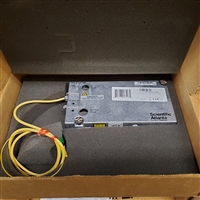
|

|
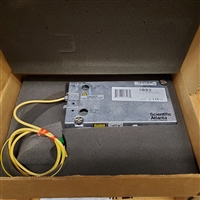
|

|
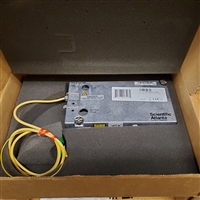
|
|
|
|
|
|
|
|
|
The bdr Digital Reverse 2:1 Multiplexing System expands the functionality of the
GS7000 and GainMaker® Reverse Segmentable (GM-RS) Nodes by increasing the
performance, reach, and efficiency of the reverse path transmissions.
|
The bdr Digital Reverse 2:1 Multiplexing System expands the functionality of the
GS7000 and GainMaker® Reverse Segmentable (GM-RS) Nodes by increasing the
performance, reach, and efficiency of the reverse path transmissions.
|
The bdr Digital Reverse 2:1 Multiplexing System expands the functionality of the
GS7000 and GainMaker® Reverse Segmentable (GM-RS) Nodes by increasing the
performance, reach, and efficiency of the reverse path transmissions.
|

|
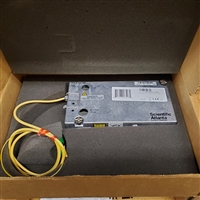
|

|
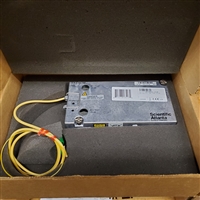
|

|
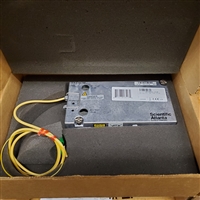
|
|
|
|
|
|
|
|
|
The bdr Digital Reverse 2:1 Multiplexing System expands the functionality of the
GS7000 and GainMaker® Reverse Segmentable (GM-RS) Nodes by increasing the
performance, reach, and efficiency of the reverse path transmissions.
|
The bdr Digital Reverse 2:1 Multiplexing System expands the functionality of the
GS7000 and GainMaker® Reverse Segmentable (GM-RS) Nodes by increasing the
performance, reach, and efficiency of the reverse path transmissions.
|
The bdr Digital Reverse 2:1 Multiplexing System expands the functionality of the
GS7000 and GainMaker® Reverse Segmentable (GM-RS) Nodes by increasing the
performance, reach, and efficiency of the reverse path transmissions.
|

|